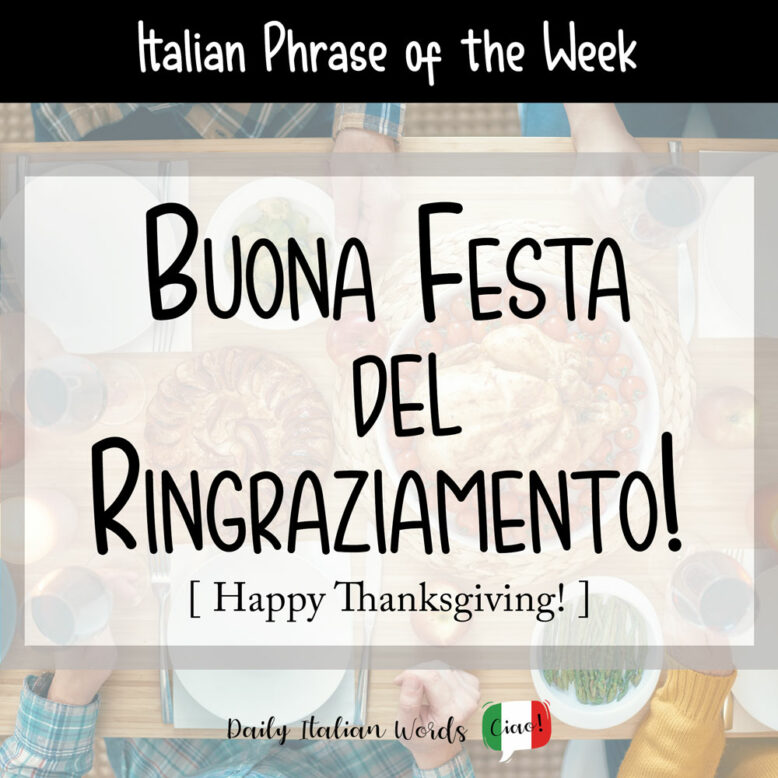Before anyone jumps on me for writing about what is essentially a North American tradition, let me take a moment to say that I know Thanksgiving isn’t celebrated in Italy, nor does it show any sign of taking root in Italian culture.
That said, I felt it was important to cover this greeting because a large chunk of our readers are, in fact, American with Italian ancestry, and most Italian-Americans do celebrate Thanksgiving.
With that out of the way, let’s begin! 😊

The Italian equivalent of the greeting Happy Thanksgiving! is:
Buona Festa del Ringraziamento!
Happy Thanksgiving!
Buona Festa is a catch-all greeting that literally translates as “good holiday” or “good celebration”. It usually appears in greetings related to santi (saints), but can be expanded to other celebrations. Here are a few examples:
- Buona Festa di Tutti i Santi / Ognissanti! = Happy All Saints’ Day!
- Buona Festa di San Valentino! = Happy Saint Valentine’s Day!
- Buona Festa di San Patrizio! = Happy Saint Patrick’s Day!
- Buona Festa di Santo Stefano! = Happy Saint Steven’s Day!
- Buona Festa del Papà! = Happy Father’s Day!
- Buona Festa della Mamma! = Happy Mother’s Day!
- Buona Festa della Repubblica! = Happy Republic Day! (Italy’s national day)

You can also use the verb augurare to greet someone during a festive time of the year. In this case, the phrase would be:
Ti auguro una buona Festa del Ringraziamento!
Vi auguro una buona Festa del Ringraziamento!
Le auguro una buona Festa del Ringraziamento!
I wish you a Happy Thanksgiving!
The version with ti refers to a single person, vi is for a group of people, and Le is the formal version for one person.
Heather Broster is a graduate with honours in linguistics from the University of Western Ontario. She is an aspiring polyglot, proficient in English and Italian, as well as Japanese, Welsh, and French to varying degrees of fluency. Originally from Toronto, Heather has resided in various countries, notably Italy for a period of six years. Her primary focus lies in the fields of language acquisition, education, and bilingual instruction.


